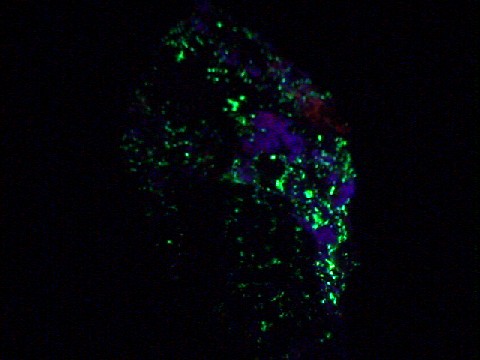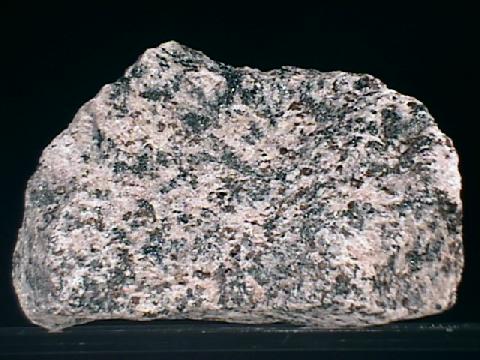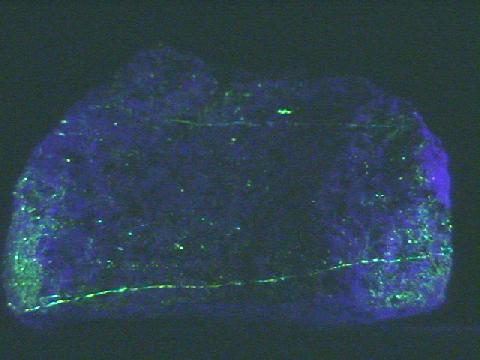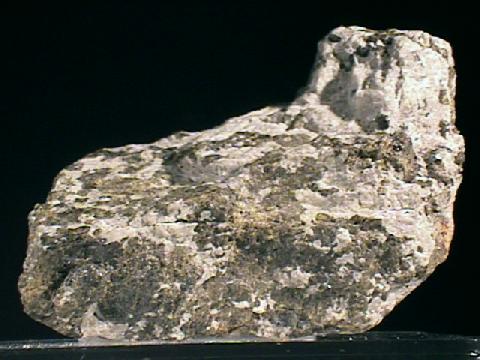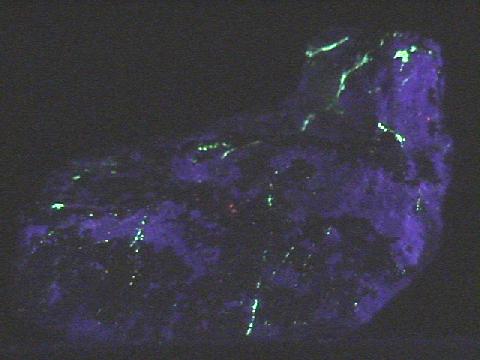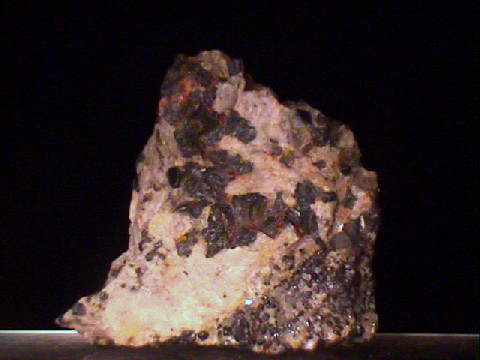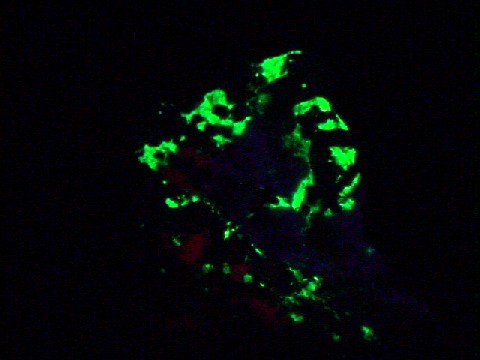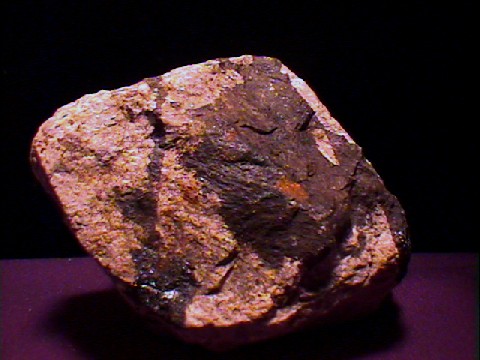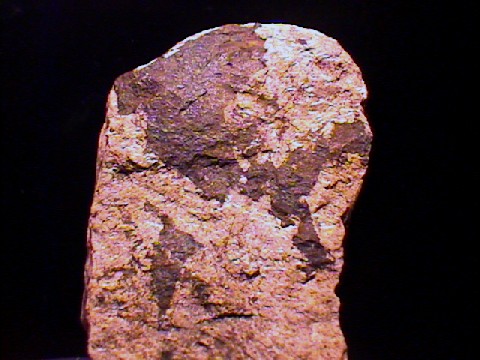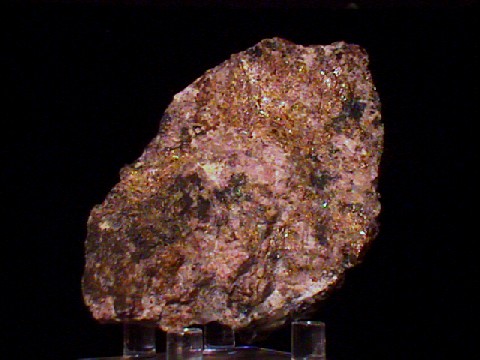
HARDYSTONITE
Specimen hrd-4
$ 25.00
Dims: 3.8 x 2.6 x 1.9" (9.0 x 6.5 x 4.7 cm)
Wt: 11.9 oz. (336 g)
Franklin, New Jersey, U.S.A.
This cabinet specimen consists mostly of Hardystonite, willemite, franklinite and clinohedrite. The Hardystonite is the most prevalent, and has a pinkish color that is easy to see in normal light. It is massive, showing no crystal form at all, and has a dull, waxy luster. Under shortwave ultraviolet light, its dull violet color is subtle but easy to see. The other minerals are more difficult to isolate, and the ultraviolet light is needed to clearly isolate them- the willemite will show a bright green coloration and the clinohedrite will show a pale orange color. The franklinite will not fluoresce at all.
